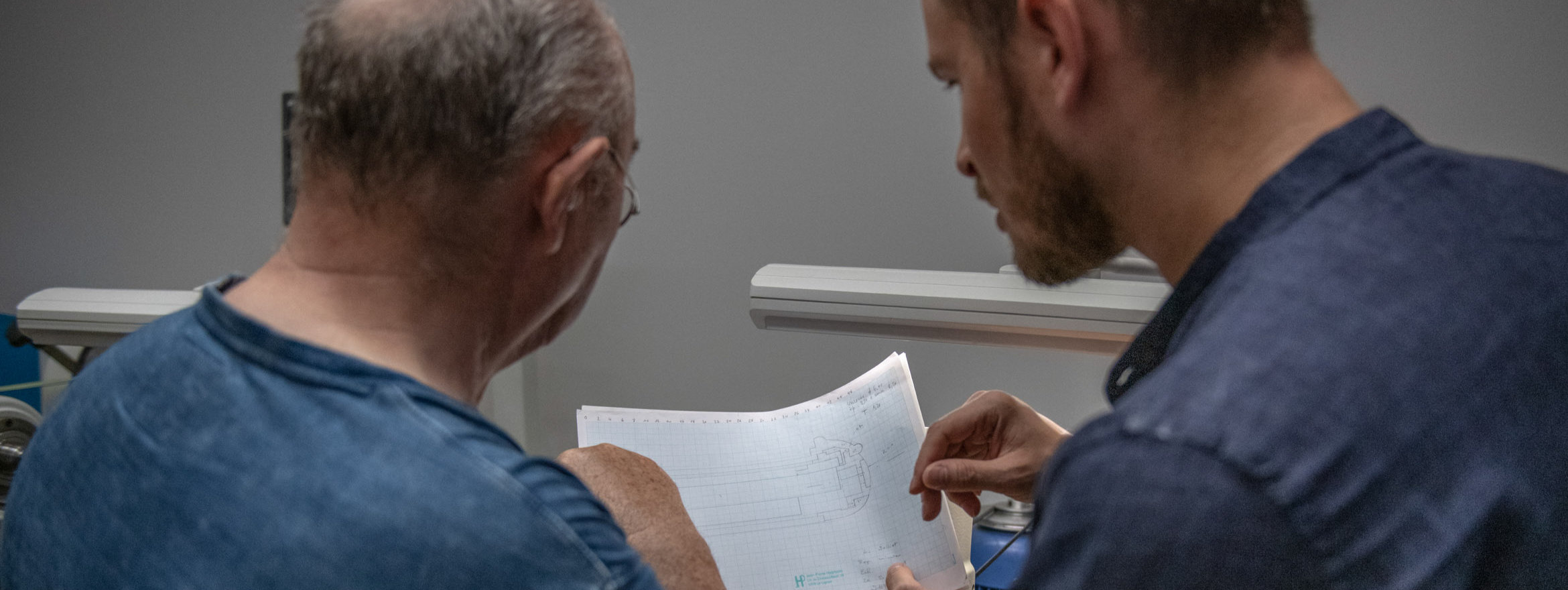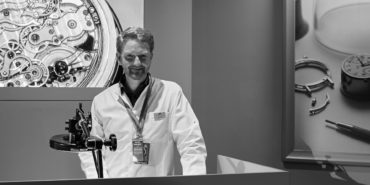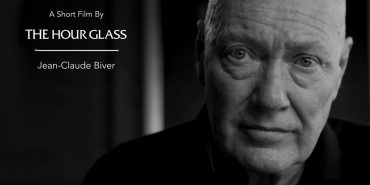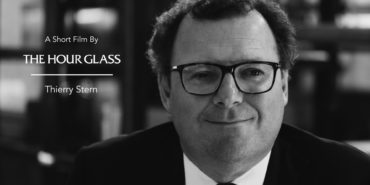Interviews • 08 Oct 2019
Interviewing Jean-Pierre-Hagmann
With a list of clients that includes everyone from Audemars Piguet, Vacheron Constantin, and Patek Phillipe; to Frank Muller, Svend Anderson, and now AkriviA; Jean-Pierre Hagmann is a true legend of the industry. Renowned for the minute repeater cases he made for Patek Philippe in the 1990s, it is said that the cases which he creates produce a superior sound to that of any other. And as such his name is often celebrated in auction catalogues, with the watches that bear his famed JHP seal regularly selling for a premium over their estimates.
Recently, thanks to the wonders of technology and some very helpful translating by my wife and Annabelle from AkriviA, I had the pleasure of chatting with Mr Jean-Pierre Hagmann. An incredibly humble and hilarious character, we delved a little further into his work process before finding out (if you’ll pardon the pun) just what makes him tick. And as you’ll soon see, just as with the watches he helped create, there is far more to the man than his extraordinary cases.

When you began your career you were making jewellery and watch bracelets, what was it that attracted you to making cases?
It was really the technical side. The inside of a case is all about precision, and the outside is about the aesthetic. I enjoyed finding the perfect balance.
You’re quite famous for that balance, and for designing and making your cases without the aid of computers, can you tell me a little about your process?
It’s not complicated, making any case. The first thing you look at is the movement – the measurements, the height, all the parts – If it’s a chronograph, you have to have all the pieces in the exact place, after that you can design the case. You can use millimetre squared paper; it works really well for making designs.
Have you always enjoyed working with your hands? Creating, fixing things?
I come from a manual family; we really do all work with our hands. In principle all you need is your hands and a good head to go with them. We have always been makers of all sorts of things.
I have built motorbikes, a plane, a boat. If I can design it, I can build it. Right now, when I have time, I am working on a steam engine. I can’t really stop – doing nothing is impossible. This is why, I accepted the African challenge on a motorbike, I took it on with pleasure.
Speaking of motorbikes, I know that you also enjoy restoring vintage motorcycles…
Oh yes! I’m a motorcycle enthusiast. Old bikes, really old bikes, I restore them completely, remaking each component. Restoring an interesting bike can take me 1 to 4 years, but the results are completely worth it. And I think any bike I’ve ever wanted, I’ve found. I regularly show my restorations at exhibitions and meetings, but I also ride them.
The most interesting course I’ve done was on the Isle of Man, famous for the Touring Trophy. I did the Manx Grand prix twice, I enjoyed it so much I had to go back.

Like your bikes, do you own any watches with the cases you’ve made?
Actually, I made a few for myself, but since demand was so high, I sold them. I do regret not keeping any, it would have been good to keep a really exceptional one. I’m like the shoemaker without any shoes!
How does it feel knowing that collector’s single out the watches that you helped create?
I am very surprised! Because I work alone, I always have worked alone and yet I had some impact in the horological world. It’s humbling, I have to be level-headed but it’s true, it does feel good.
Has the industry changed much since your early days? We can see that more and more brands are beginning to make their own components for themselves…
It’s a logical evolution, they can standardise/manage quality and fine-tune at each step. So, lots of large manufacturers are making their own cases, Patek, Rolex… Vacheron have never made their own cases, and others…I am not sure. But it’s a direction that many are taking because it allows them to manage quality often. There can be problems with suppliers, or technical issues, etc. Rolex were the first to see this.
Something else that has changed is the profession, before there were specialists, jewellery makers that made cases or parts, but that’s gone now, replaced by generalist operators and computers.
They are a dying breed, aren’t they? But there are still a handful of specialists hanging in there like yourself, and some incredible independents like AkriviA. What do you think of today’s independent watchmakers, how do they compare?
It’s the same spirit. I must say I started at a good time, I fell into this working with independents who needed cases – they worked alone in those days as well – so we worked a lot together, they needed cases for lots of pieces, classics or novelties. Then lots of unique models, because it’s cheaper to make something unique with me than to make it by machine, because that takes longer. I can draw it up and make it straight away, in 40 to 60 hours they can have a case.

Which do you prefer?
I don’t mind, it’s much the same process. If they know what they want then it’s not a problem. I worked of course with Patek, Breguet, Muller, lots of brands, if they know their stuff well, it’s not a problem, and if they don’t, then I’ll teach them…
I also had lots of other private and independent clients – with magnificent movements. They would bring them to me in a box, and have some ideas on the style they want. But if I could see they were drifting in the wrong direction I’d bring them back on track. We cannot forget that the watch must have longevity in its design, it’s permanent so you want it to be pretty. But not everyone has the same taste, some people have bad taste, like with Muller, he’s managed to corner the small percentage of the market that has bad-taste…
One word that is always important is harmony…harmony in size, volume, colour, aesthetic, ratio, it’s a magnificent word.
Is finding that harmony what keeps you going? You retired in 2017, but you never really stopped working…
I have always been active. When you are active you have relationships with lots of different people, you have things to do, you don’t want to think that the next day it’s all over. You keep your spirits up, so you need to learn to find your spirit if you lose it. If you learn to do nothing, you’ll lose your mind quickly. Luckily, I have bikes – old and modern – they’ve allowed me to keep going, and also relax, my bikes are important, and to this day I still ride them all around Europe.
So, do you think you will you ever retire?
I don’t know – it’s hormonal – I have nothing to lose. Sure, you need to rest more, and things take a little longer than they used to, but I do something every day. You can’t forget, when I was young, we didn’t have toys. The only toys I had were the ones that I made, so I would make my own toys with cardboard and wood. I have always had the urge to make things for myself. I made my first bike, the same with my first motorbike…so always…then I made my first car, I bought it, disassembled it, and rebuilt in 4-5 months, it took time, but then I had a car.
I can make anything with my hands but it needs a lot of thought and reflection. Before starting any project, I do research, find books on the subject, and study people that make things, so I can learn from them. I worked on a music box – a really big one – I went to see the specialists, this way I was able to completely restore this enormous music box that was originally manufactured around 1890.

Everything you’ve learnt, you’ve learnt from books and from studying others?
Yes, I am self-taught. I learned a lot from others, it’s logic, I observe and think through the solution. I can’t do everything, but I can do a lot by thinking about it and finding the logic.
If I wasn’t a casemaker, the other profession I would have chosen would have been an organ maker. They are incredibly complex; I would have really enjoyed that profession. The physics of the sound, the metal and wood, and the history. There are organs around still in use to this day – from the middle-ages – there is one that’s been in use since 1515 I think, always in use.
Have you ever rebuilt one?
Unfortunately, no. I’ve visited one and learned how they work, all the different types, it’s very interesting. I’ve visited all the musical instrument museums in the region – there are some magnificent things.
There’s certainly still time, and it sounds like retirement is a long way off yet. What’s next for you?
My last great fireworks! I will make sure that I go out with a bang.











